Gaviidae – Divers or Loons
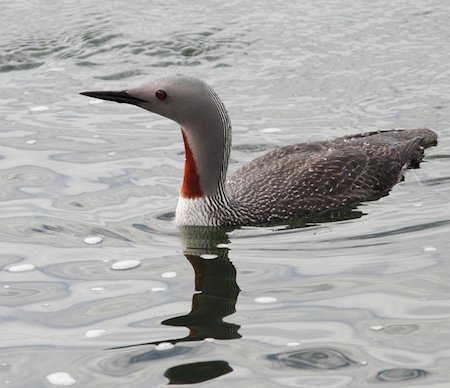
The Gaviidae commonly called divers (UK/Ireland) or loons (North America) are a group of aquatic birds found in many parts of North America and northern Eurasia. All living species of are members of the genus Gavia, family Gaviidae and order Gaviiformes.
Generally, all the species are the size of a large duck or small goose, which they resemble superficially when swimming. Like ducks and geese but unlike coots (which are Rallidae) and grebes (Podicipedidae), their toes are connected by webbing. They may be confused with cormorants Phalacrocoracidae (Cormorants), which are relatives of divers and like them are heavy set birds whose bellies – unlike those of ducks and geese – are submerged when swimming. Flying divers resemble a plump goose with a seagull’s wings, relatively small in proportion to the bulky body. The bird holds its head pointing slightly upwards during swimming, but less so than cormorants do. In flight the head droops more than in similar aquatic birds.
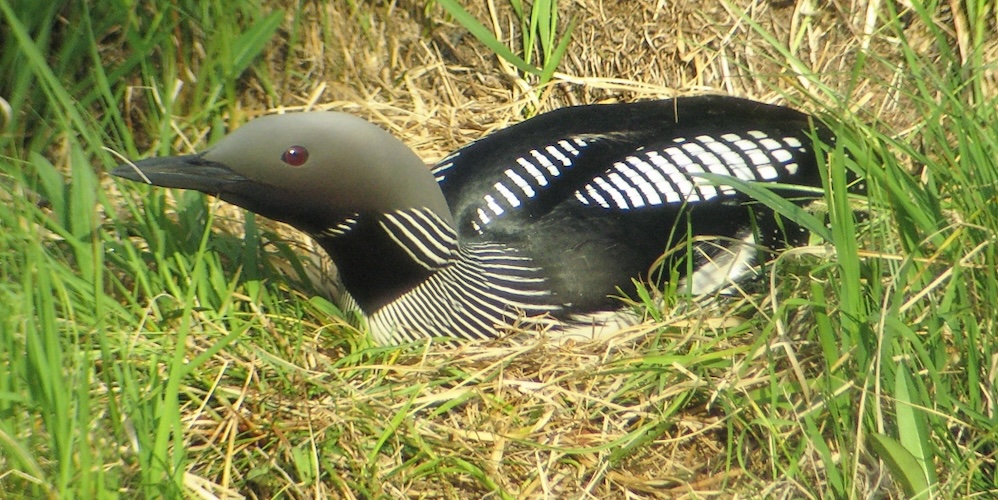
Black-throated Diver Gavia arctica – ©Åsa Berndtsson CC BY 2.0 via Wikimedia Commons
Males and females have identical plumage. All species are largely patterned black-and-white in summer, with grey on the head and neck in some species, and one has a red-throat patch when in breeding plumage. All have a white belly. This resembles many sea-ducks (Merginae) – notably the smaller goldeneyes (Bucephala) – but is distinct from most cormorants which rarely have white feathers, and if so usually as large rounded patches rather than delicate patterns. All species of divers have a spear-shaped bill.
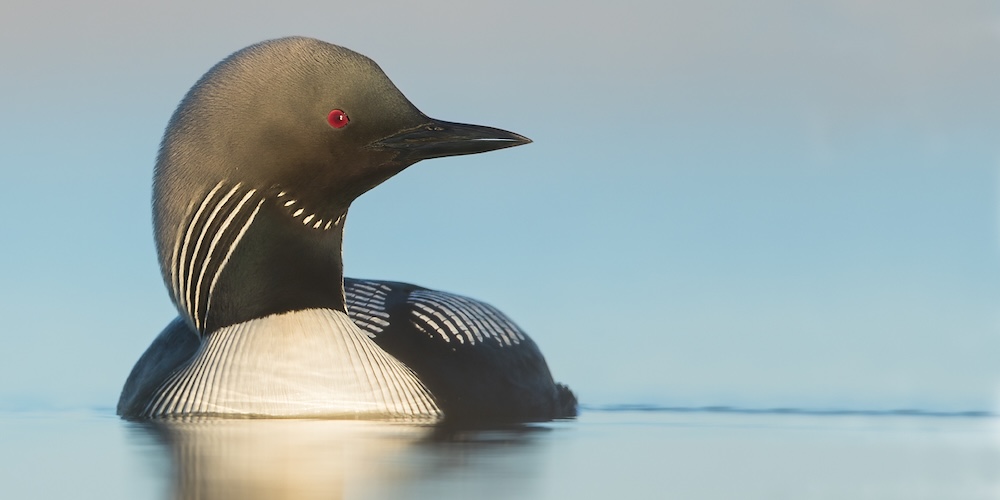
Pacific Loon Gavia pacifica – ©Dubi Shapiro
In winter plumage is dark grey above, with some indistinct lighter mottling on the wings, and a white chin, throat and underside. The species can then be distinguished by certain features, such as size and colour of head, neck, back and bill, but often reliable identification of wintering divers is difficult even for experts – particularly as the smaller immature birds look similar to winter-plumage adults, making size an unreliable means of identification.
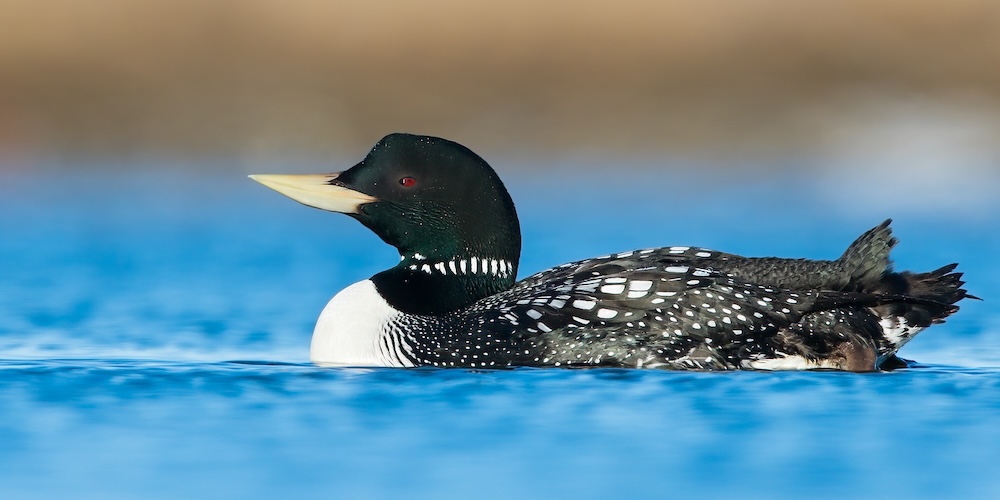
Yellow-billed Diver Gavia Adamsii – ©Dubi Shapiro
Gaviiformes are among the few groups of birds in which the young moult into a second coat of down feathers after shedding the first one, rather than growing juvenile feathers with downy tips that wear off as is typical in many birds. This trait is also found in tubenoses (Procellariiformes) and penguins (Sphenisciformes), both relatives of divers.
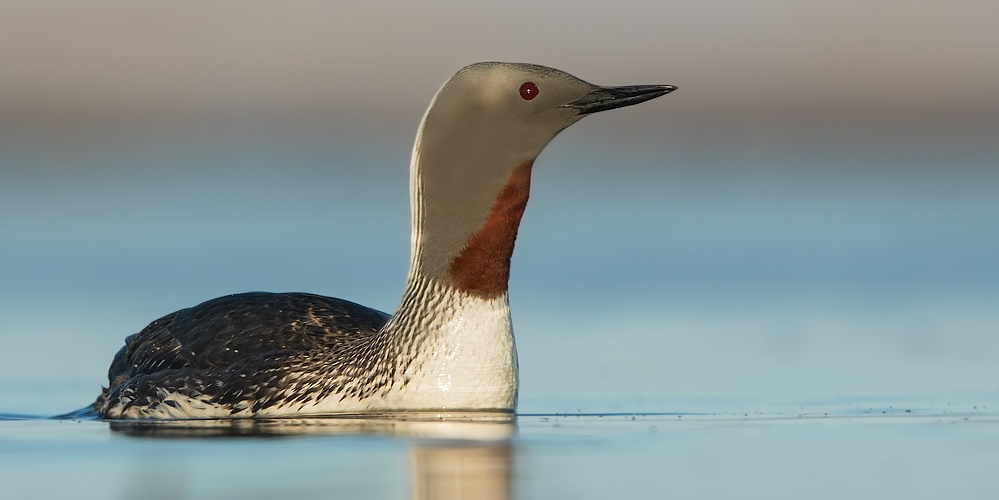
Red-throated Diver Gavia stellata – ©Dubi Shapiro
They are excellent swimmers, using their feet to propel themselves above and under water while their wings provide assistance. Because their feet are far back on the body, loons are poorly adapted to moving on land, and usually avoid going onto land, except when nesting. They are all decent fliers, though the larger species have some difficulty taking off and thus must swim into the wind to pick up enough velocity to become airborne.
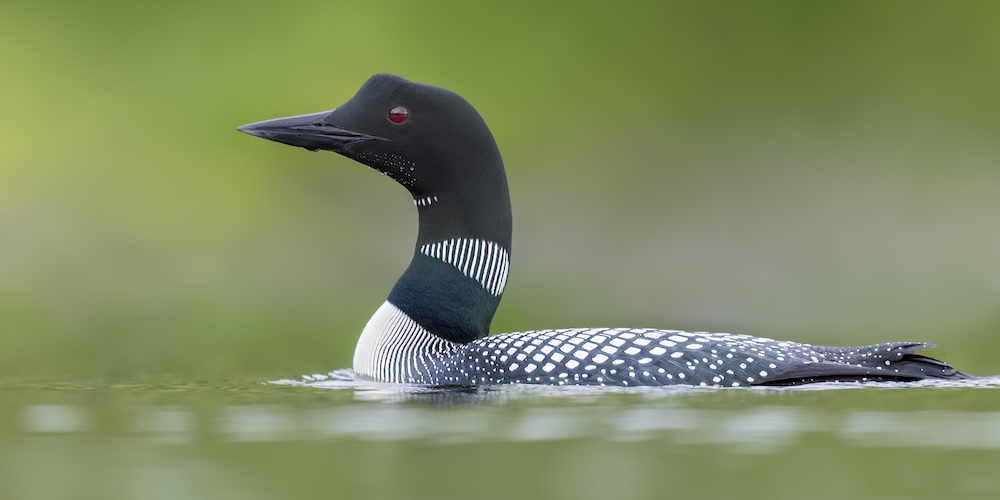
Great Northern Diver (Common Loon) Gavia immer – ©Dubi Shapiro
They find their prey by sight. They eat mainly fish, supplemented with amphibians, crustaceans and similar mid-sized aquatic fauna. Specifically, they have been noted to feed on crayfish, frogs, snails, salamanders and leeches. They prefer clear lakes because they can more easily see their prey through the water. They use their pointed bill to stab or grasp prey. They eat vertebrate prey headfirst to facilitate swallowing, and swallow all their prey whole. To help digestion, they swallow small pebbles from the bottoms of lakes. While they spend most of their time at sea, they nest during the summer on freshwater lakes or ponds. Smaller bodies of water will usually only have one pair. Larger lakes may have more than one pair, with each pair occupying a bay or section of the lake. Red-throated divers, however, may nest colonially, several pairs close together, in small Arctic tarns and feed at sea or in larger lakes, ferrying the food in for the young.
-
Number of bird species: 5
(As at September 2025)
According tom the recently (2025) amalgamated AviList, the Gaviidae family consists of just five species, in one genus. They are:
Red-throated Diver Gavia stellata
Great Northern Diver Gavia immer
Yellow-billed Diver Gavia Adamsii
Pacific Loon Gavia pacifica
Black-throated Diver Gavia arctica
-
Flight Identification of European Seabirds
| By Anders Blomdahl, Bertil Breife & Niklas Holmstrom | Christopher Helm | 2007 | Paperback | 374 pages, 690 colour photos | ISBN: 9780713686166 Buy this book from NHBS.com -
Loon Lessons - Uncommon Encounters with the Great Northern Diver
| By James D Paruk | UMP | 2021 | Hardback | 221 pages, 12 plates with 26 colour photos and colour illustrations; 8 b/w photos, 3 b/w maps | ISBN: 9781517909406 Buy this book from NHBS.com -
Loons - The Iconic Waterbirds
| By Stan Tekiela | Adventure Publications | 2021 | Paperback | 160 pages, colour photos | ISBN: 9781647552091 Buy this book from NHBS.com -
Loons - Treasured Symbols of the North
| By Wayne Lynch | Fitzhenry and Whiteside | 2023 | Paperback | 224 pages, colour photos | ISBN: 9781554555734 Buy this book from NHBS.com
-
Gaviidae
Family AccountAll living species of loons are members of the genus Gavia, family Gaviidae and order Gaviiformes. ... Wikispecies has information related to Gaviidae. -
Gaviidae
Family AccountThey are a small group of birds and all share the same basic streamlined shape with a long neck ideally suited to a marine life chasing fish.
-
Black-throated Diver/Loon Gavia arctica
Species AccountThis species has an extremely large range, and hence does not approach the thresholds for Vulnerable under the range size criterion (Extent of Occurrence <20,000 km2 combined with a declining or fluctuating range size, habitat extent/quality, or population size and a small number of locations or severe fragmentation). -
Black-throated Diver/Loon Gavia arctica
Species AccountSound archive and distribution map. -
Black-throated Diver/Loon Gavia arctica
Species AccountThe black-throated loon (Gavia arctica) is a migratory aquatic bird found in the northern hemisphere. The species is known as an Arctic loon in North America and the black-throated diver in Eurasia. Its current name is a compromise proposed by the International Ornithological Committee -
Great Northern Diver or Common Loon Gavia immer
Species AccountBirdLife species status -
Great Northern Diver or Common Loon Gavia immer
Species AccountThe great northern loon (Gavia immer), is a large member of the loon, or diver, family of birds. The species is known as the common loon in North America and the great northern diver in Eurasia; its current name is a compromise proposed by the International Ornithological Committee. -
Great Northern Diver or Common Loon Gavia immer
Species AccountSound archive and distribution map. -
Pacific Loon or Diver Gavia pacifica
Species AccountThe Pacific Loon is perhaps the most abundant loon in North America. -
Pacific Loon or Diver Gavia pacifica
Species AccountSound archive and distribution map. -
Pacific Loon or Diver Gavia pacifica
Species AccountThe Pacific loon, previously considered conspecific with the similar black-throated loon, was classified as a separate species in 1985. -
Pacific Loon or Diver Gavia pacifica
Species AccountBirdLife species profile -
Red-throated Diver or Loon Gavia stellata
Species AccountBirdLife species profile -
Red-throated Diver/Loon Gavia stellata
Species AccountThe red-throated loon (North America) or red-throated diver (Britain and Ireland) (Gavia stellata) is a migratory aquatic bird found in the northern hemisphere. -
Red-throated Diver/Loon Gavia stellata
Species AccountSpecies account -
Red-throated Diver/Loon Gavia stellata
Species AccountSound archive and distribution map. -
Red-throated Diver/Loon Gavia stellata
Species AccountThe smallest of the loons, the Red-throated Loon breeds at high latitudes in North America and Eurasia. -
Yellow-billed Diver or Loon Gavia adamsii
Species AccountA large, heavy-billed loon of the High Arctic. Much like a Common Loon but with a thicker neck and blockier head. Pay special attention to the bill: note straight upper edge, angled lower edge, and all-pale yellowish color (especially the tip). -
Yellow-billed Diver/Loon Gavia adamsii
Species AccountBirdLife status and profile -
Yellow-billed Diver/Loon Gavia adamsii
Species AccountThe yellow-billed loon (Gavia adamsii), also known as the white-billed diver, is the largest member of the loon or diver family. -
Yellow-billed Diver/Loon Gavia adamsii
Species AccountSound archive and distribution map.
